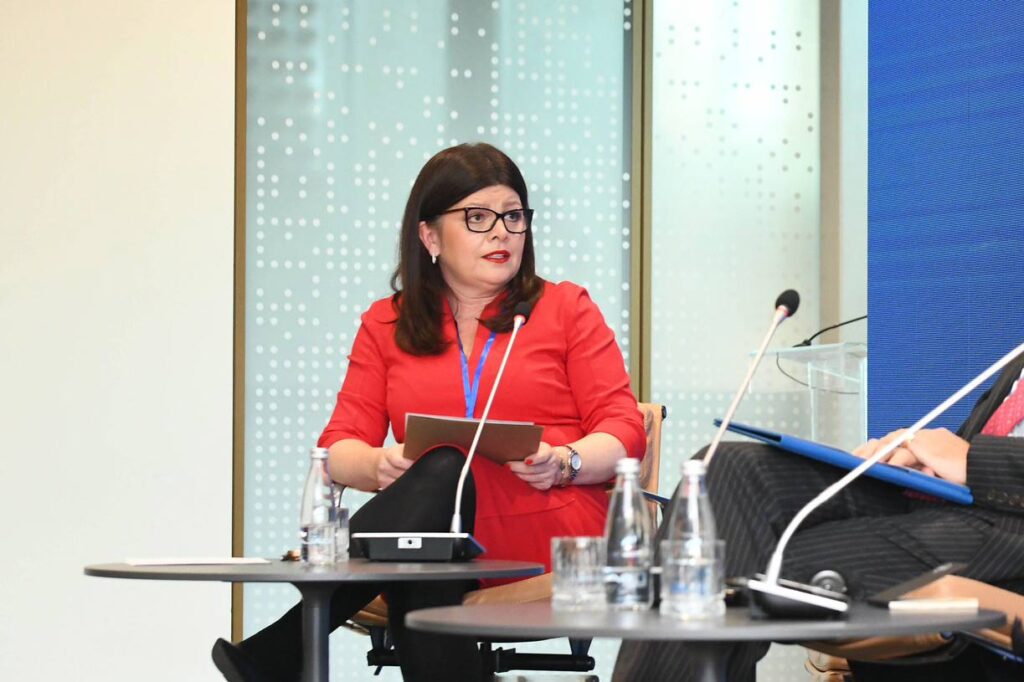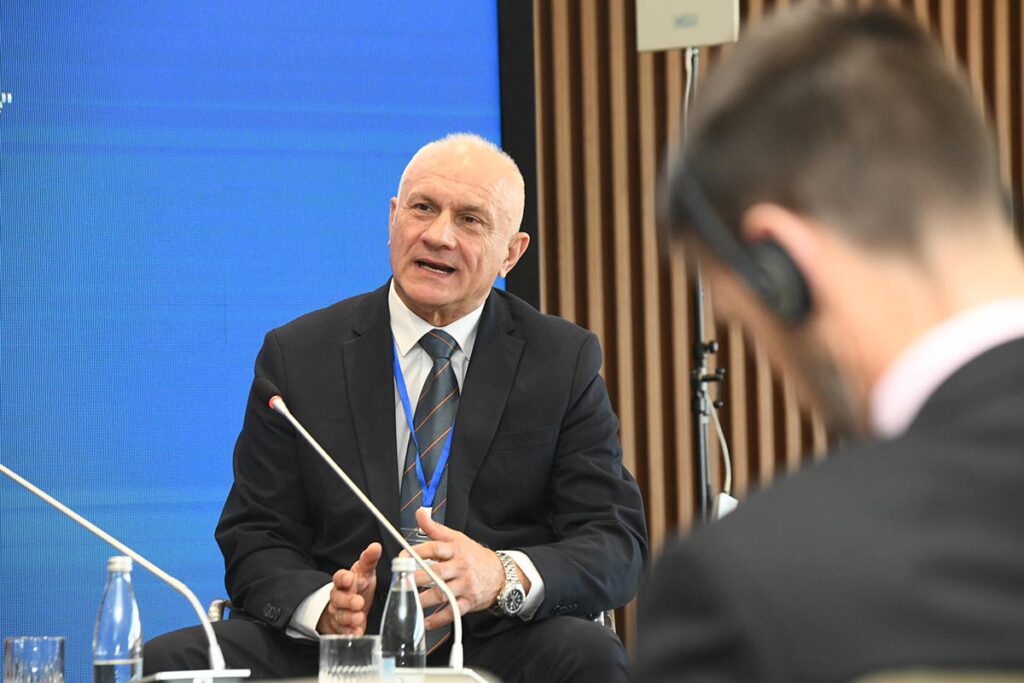The second panel of the “Western Balkans 2030 – Connecting Today’s Efforts to Tomorrow’s Europe” conference, organised by The Region magazine with the support of the EIB and UNOPS, gathered some of the most influential voices shaping the region’s energy future. Moderated by Branislava Jovičić, Owner and Editor of Balkan Green Energy News, the session offered a clear-eyed look at the region’s climate commitments — and the complex path required to turn them into reality.

All speakers agreed on one point: the Western Balkans cannot delay the green transition, but it must pursue it without undermining energy security, social stability or economic competitiveness.
The UK: A Case Study in Decarbonisation
Opening the discussion, H.E. Edward Ferguson, UK Ambassador to Serbia, described how the United Kingdom restructured its energy mix after setting the 2050 net-zero target. The UK became the first G7 country to eliminate coal from its power system, replacing it with major investments in offshore wind, hydropower, solar and other renewable sources.

“What matters is speeding up implementation,” he said. “We simplified procedures so good projects can move fast.”
His remarks underscored what many in the region acknowledge: regulatory reform must accompany technological change.
RCC: Climate Adaptation Will Cost €40 Billion
The scale of the challenge was further illustrated by Arslan Umut Ergezer, Deputy Secretary General of the Regional Cooperation Council (RCC). He noted that the Western Balkans will require around €40 billion for climate adaptation alone — a figure far beyond what donors can provide.

“These funds cannot come from donors alone,” he stressed. “The private sector must be involved, because public finances simply won’t be enough.”
He added that governments must balance climate ambition with employment and competitiveness, “one of the toughest policy challenges in the region.”
Serbia: Transitioning While Ensuring Security
The panel then turned to the local energy landscape.
Maja Vukadinović, Assistant Minister for Energy Efficiency and Climate Change in Serbia’s Ministry of Mining and Energy, highlighted the unique position Serbia faces. With nearly two-thirds of its electricity coming from coal, the country cannot afford to close its coal plants until it builds new capacities and large-scale storage systems.

“Coal must remain the backbone until we build new capacities and large-scale storage,” she said, emphasising that security of supply remains a priority.
She outlined a series of strategic investments that underpin Serbia’s 2030 energy plan — a plan in which almost every second kilowatt-hour should come from renewable sources. Among these projects are a 1 GW solar-battery energy facility, the Bistrica pumped-storage hydropower plant, the establishment of hydrogen storage capacities by 2030, and a major solar-thermal plant in Novi Sad designed to store solar energy collected in summer for use during winter.
These projects show that Serbia’s transition is not theoretical — it is already underway.
EPS: Stability Must Guide the Transition
Providing the perspective of the region’s largest energy company, Dušan Živković, General Manager of Elektroprivreda Srbije (EPS), emphasised that the energy transition is not just a technical challenge but also a structural one.

“Energy companies must ensure stable supply while navigating decarbonisation, politics, international expectations and rapid digitalisation,” he said. With pressure from new technologies, artificial intelligence, and unstable global markets, he noted that the transition “has to be gradual and carefully managed.”
His remarks highlighted the delicate balance between meeting climate obligations and ensuring reliable electricity for millions of citizens.
The Takeaway
If the green transition once seemed distant, the panel made clear that the Western Balkans is already moving — cautiously, but decisively. The cost of standing still, all speakers agreed, would be far greater than the cost of change.
Strategic investment, strong regional cooperation and a realistic but determined roadmap will define the region’s energy future — one that aims to be cleaner, more resilient and better aligned with European standards.
Photos from the Western Balkans 2030 conference are available here.
Photo: Beta photo/Milan Ilic/Zoran Petrovic/Dario Kostadinovic







